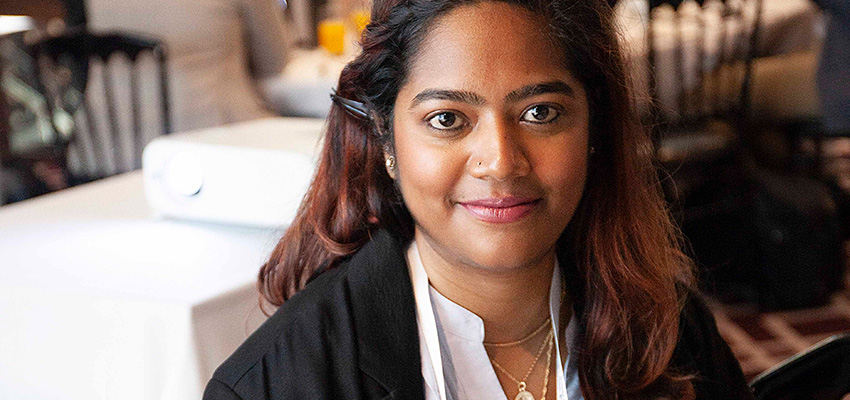What made you consider a maritime
career?
I never dreamt of being in maritime. It was my desire for an offbeat career that brought me here. I was at the crossroads looking for a career option or a change. I saw a newspaper ad where A.P.Moller and Maersk (now just Maersk) called for candidates for a fully-sponsored dual competency bachelor course (B.Sc. Nautical Science and B.E. Marine engineering clubbed together) and they would offer subsequent employment in their fleet too. I had no second thoughts. No financial burden for my parents and employment assurance from the day you joined college. What more could I ask for?
Tell me about your career?
After a couple years sailing around the world aboard some of the biggest Maersk container ships, I was looking for a career closer to home. I am the youngest of two daughters and my elder sister lives abroad. I had to be closer to my parents and was looking for a shore option that wasn’t the typical 9-5 job (I know that I wouldn’t have survived the monotony).
Another newspaper ad came to my rescue. I applied for the position of trainee pilot with Kolkata Port Trust. They sought applications from junior officers also (no masters compulsory – due to a big shortage of masters because of long training periods in this river passage).
I saw the opportunity to become a pilot. What followed was six-and-a-half years of sweat. After extensive training I became a pilot in early 2018. There has been no looking back. The job satisfaction is unparalleled. There is no monotony and there are challenges galore. The River Hooghly is considered the most treacherous river pilotage in the world with shifting sandbars, varying depths, an extremely narrow channel and snake like bends and turns with roaring tidal currents (up to 10 knots).
What were some of the challenges?
Societal stigma about women in shipping was among the biggest challenges. Whether you like it or not, you become a flag bearer for women. You’re constantly being watched and judged and sometimes one gets tired, angry and frustrated. This could also lead to self-doubt. This is the toughest battle. To fight that doubting, apprehensive, discouraging self is what we pioneers have to somehow overcome. I used methods like self-pep talks, promising myself to persevere and drawing support from family and friends.
We women in maritime need to be doubly good if not more, to survive here, to be acknowledged, accepted and taken seriously. And we women are fortunately so good at that, multi-tasking and more.
How can we promote maritime careers for women?
We first need more women out there to stop the biases, issues and get seafaring men used to working with women. For this, we need employers to seriously increase their female workforce. We still struggle to get our girl cadets onboard. We need to give visibility to the champions out there. We need the women at the helm of affairs – take those pioneers and put them in top positions. When they rise, they will automatically pull up other women along the way.
What would you like to improve in the industry?
As an Indian marine pilot I have a few wishes. We need a robust workforce, best-in-class personal protective equipment, license standardisation, more resources, tools and equipment to help with our work and better infrastructure. We also need a better voice as an association of pilots, and quality safety management systems. These are what I dream of for my community and I will work towards.
What else would you like to share?
Being invited to the AMPI conference on pilotage and port logistics this year has been the best professional experience for me, ever. I thank AMPI and the Nautical Institute of South East Australia for having sponsored this trip. I have learnt many lessons. If all goes well, I will have achieved my dream initiatives for the pilots community in my country soon enough.
This article appeared in the December 2019 edition of DCN Magazine

